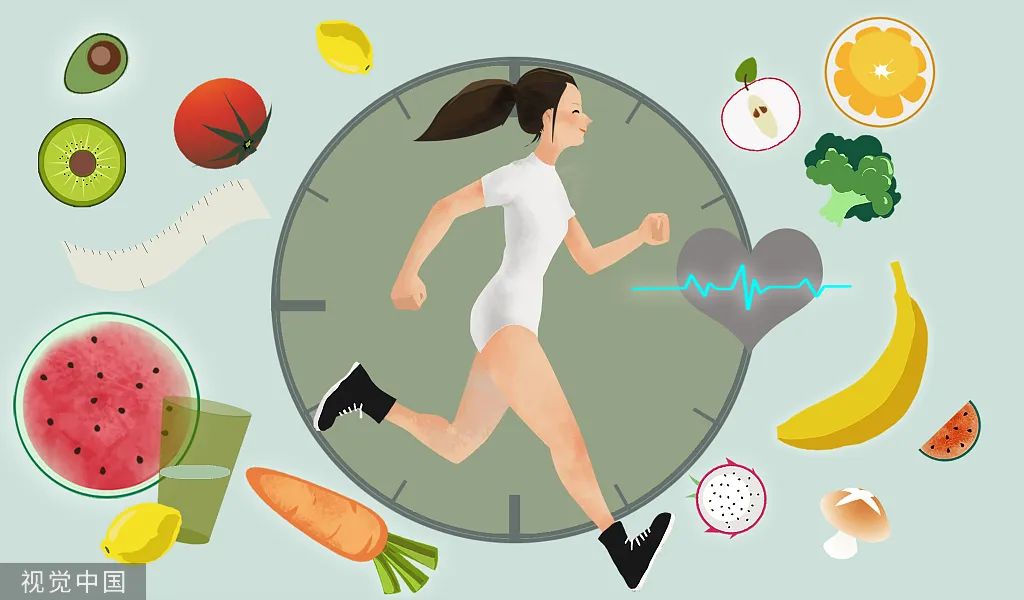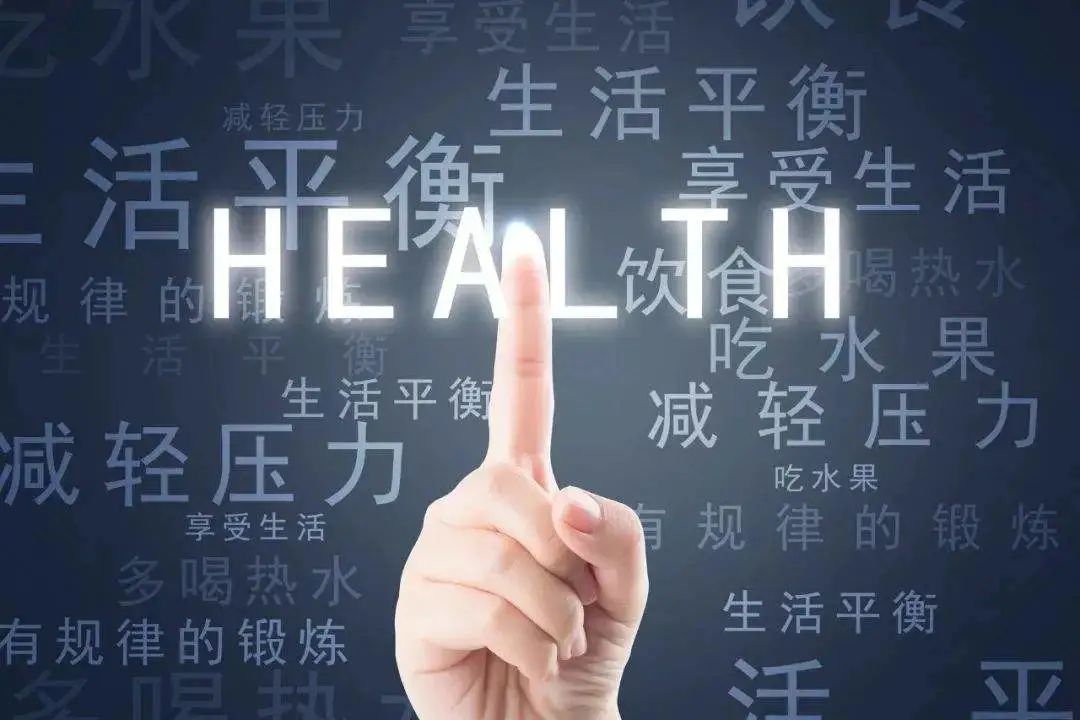
Moxibustion
One stick of moxa applied to the skin stops pain immediately,
One session of moxibustion can eliminate chronic ailments instantly.

The Mechanism of Moxibustion
Moxibustion is an external treatment method in Traditional Chinese Medicine (TCM) with a history of thousands of years, and its efficacy has been confirmed by countless practitioners throughout history. As the clinical application of moxibustion continues to expand, research into its therapeutic mechanisms is also deepening. There is currently no consensus internationally on the mechanisms of moxibustion, but researchers in China, guided by TCM theory and based on the meridian system, combined with modern experimental studies, believe that the mechanisms of moxibustion are related to several aspects.
1. Local Stimulation Effect
Moxibustion provides thermal stimulation to the body, enhancing local blood circulation and lymphatic flow, while also improving the metabolic capacity of skin tissues. Pathological products such as inflammation, adhesions, exudates, and hematomas can be effectively dissipated. The local thermal stimulation can also induce the diffusion of inhibitory substances in the cerebral cortex, reducing the excitability of the nervous system, thus achieving a sedative and analgesic effect without any toxic side effects. The warmth can also promote the absorption of medicinal properties, maximizing the efficacy of the moxa itself, other herbs in the moxa stick, and the properties of the materials used. On the other hand, moxibustion also has a near-infrared radiation effect. The near-infrared radiation from moxibustion provides necessary energy for the body’s activities, and the energy emitted can be regulated by the body. During moxibustion therapy, the near-infrared radiation has strong penetration, allowing energy to be transmitted through the meridians to distant areas and stimulating acupoints to activate the body’s immune response, restoring normal physiological functions.



2. Meridian Regulation Effect

The theory of meridians is the foundational theory of moxibustion. The stimulation of acupoints ultimately regulates the five zang organs and six fu organs, as well as the limbs and bones through the meridian system, maintaining the overall function of the body.
(1) First, the meridian acupoints have external sensitivity to medicines. This means that selecting acupoints for moxibustion is more effective than choosing general surface points. If the moxibustion point deviates from the acupoint, the sensation transmission phenomenon cannot occur, and the therapeutic effect will be significantly reduced.

(2) Secondly, the meridian acupoints also have an amplifying effect on medicines. The meridian system is not merely a simple surface pathway but a multi-layered, multifunctional, and multi-form regulatory system that connects the five zang organs and six fu organs internally and the skin externally. When moxibustion is applied to acupoints, it influences other levels of physiological functions through the meridian system, forming a multi-layered feedback loop where different levels stimulate and cooperate with each other, leading to a physiological amplification effect. Clinically, for some similar diseases, it may take several doses of herbal medicine to see results, while using the corresponding acupoints for moxibustion often yields immediate effects.
(3) Finally, the meridian acupoints also have a storage effect for medicinal properties. For example, in treating chronic bronchitis and asthma, we often use the method of treating winter diseases in summer, that is, performing moxibustion once daily during the hot summer days for several hours. From a general analysis, this method seems short in duration and low in dosage, but it achieves excellent results because acupoints have a storage property—the physicochemical effects of the medicine can remain in the acupoints for a long time or be slowly released throughout the body, thus exerting overall regulatory and health-preserving effects.



3. Immune Function Regulation Effect

The human immune system is the body’s resistance to pathogens or toxins, which corresponds to the white blood cells that produce antibodies to enhance immune function and engulf foreign bacteria, thus providing a defense mechanism. Moxibustion has the function of enhancing the human immune system, and many therapeutic effects of moxibustion are achieved by regulating immune function. This effect has a bidirectional regulatory characteristic; if it is too low, it can be elevated, and if it is too high, it can be lowered. During the application of moxibustion for existing diseases, this regulatory effect becomes very evident. Staphylococcus aureus is a common pathogenic bacterium that can easily be carried by humans and animals, growing in healthy individuals’ noses, throats, and hands, and can proliferate significantly at wound sites. If the number of Staphylococcus aureus increases, it may produce toxins that harm human health. Moxibustion can increase the number and average migration speed of white blood cells, enhancing their ability to attack Staphylococcus aureus. Moxibustion can also promote peripheral circulation, facilitating the recirculation of immune cells and their movement into lymphatic tissues, thereby enhancing the induction of local immune responses and the phagocytic function of macrophages. The aging process of the human body is closely related to immune function. Studies have shown that after moxibustion therapy in middle-aged and elderly individuals, aging scores significantly decrease, and various clinical symptoms improve, with enhanced cellular immune function. This is because moxibustion can correct abnormal immune states and delay the aging of the pituitary-thymus axis, thus exerting an anti-aging effect.

Above summarizes the mechanisms of moxibustion; below, I will detail the efficacy of moxibustion in the following aspects.
1. Activating Cellular Movement
The smallest unit of the human body is the cell. Although small, each cell has life and can move. The skin, muscles, bones, nerves, and blood vessels that make up our body are all composed of cells. When the body is fatigued or ill, the activity of these cells becomes sluggish. For example, injuries, cerebral hemorrhage, gastric ulcers, and cancer indicate changes in cells, meaning cells are damaged or deformed.
Applying moxibustion to our body will damage the tissue cells at the moxibustion site, but they will return to their original state after stopping moxibustion. Moreover, the protein bodies produced at the burn site of moxibustion will be absorbed by the body to activate physiological activities, which can not only prevent diseases but also be very helpful in treating them.
2. Promoting Blood Circulation
Blood circulates throughout the body centered around the heart, delivering oxygen inhaled through the lungs and nutrients absorbed by the gastrointestinal tract to all tissues, providing the energy needed for bodily activities, and transporting unnecessary substances and carbon dioxide to excretory organs. Therefore, if blood circulation is not smooth, certain parts of the body will malfunction. Moxibustion has a definite impact on such blood circulation. The moxibustion site will become congested, and blood will accumulate. For areas with excessive blood, moxibustion can be applied at a distant site to induce blood circulation.
Moxibustion also promotes the heartbeat. It can enhance the contraction strength of the myocardium (the muscle that makes up the heart), allowing blood to be pumped out of the heart more forcefully, and can also dilate peripheral capillaries, promoting blood circulation, thus alleviating discomfort caused by poor blood circulation, such as cold hands and feet, difficulty sleeping, dizziness due to brain ischemia, and lower limb swelling due to prolonged standing. By selecting appropriate sites for moxibustion based on symptoms, blood circulation can become smooth, accelerating the disappearance of symptoms.
Additionally, moxibustion can promote lymphatic flow. Lymph nodes in the neck, armpits, and groin defend against harmful substances in the body and have detoxifying effects. Performing moxibustion at these sites allows toxic substances to reach the lymph nodes more effectively, speeding up detoxification.
As mentioned above, moxibustion can strengthen the heart’s power, improve blood and lymph flow, and regulate overall circulation, thus having good efficacy for various diseases caused by circulatory disorders.
3. Effects on Blood Components
Blood is the liquid flowing in blood vessels, but microscopic observation reveals that blood cells, known as red blood cells, white blood cells, and platelets, float in a liquid called plasma. Plasma contains various nutrients, hormones, and immune substances.
Research on the effects of moxibustion on blood components is the most abundant in moxibustion studies. Based on studies of blood component changes before and after moxibustion in rabbits, guinea pigs, or humans, the following content has been compiled.
1. Increase in Red Blood Cells
Studies have found that after several months of continuous moxibustion, the number of red blood cells significantly increases. Red blood cells are round cells that are red in color and contain hemoglobin (the red substance in blood) that carries oxygen and carbon dioxide. The number of red blood cells in adult males is about 5 million, while in adult females, it is about 4 million.
The increase in red blood cells indicates an enhanced ability to transport oxygen to various tissues. The more oxygen transported, the stronger the activity of the tissues, which can enhance health and improve disease resistance. Since moxibustion can increase the number of red blood cells, it is very beneficial for those with anemia or low blood counts.
2. Increase in White Blood Cells
White blood cells, like red blood cells, are also a type of cell in the blood, with diverse shapes and properties. Numerous experiments have demonstrated that moxibustion can increase the number of white blood cells.
White blood cells have phagocytic functions, fighting against bacteria that invade our bodies and killing them. Especially at sites of inflammation, white blood cells are the first to gather, and their total number will increase at this time.
Because moxibustion has the effect of increasing white blood cells, it is helpful in treating inflammation. Moxibustion is effective for abscesses, tonsillitis, conjunctivitis, and other minor inflammations.
Dr. Harada observed changes in white blood cell counts before and after moxibustion in rabbits and found that after 15 minutes of moxibustion, the number of white blood cells increased, reaching twice the normal count after 1-2 hours, decreasing after 4 hours, and then increasing again to 25 times the normal count after 8-12 hours, with this increase lasting for 4-5 days. Similar results were observed in human trials.
3. Hemostatic Effect
Blood hardens when it encounters air, a phenomenon known as coagulation. Experiments showing that moxibustion can accelerate blood coagulation speed indicate that moxibustion has a hemostatic effect.
4. Immune Effect
Immunity refers to the physiological function of humans to prevent certain diseases. Before birth, humans can receive blood containing immune substances from the mother, but this is still insufficient, so postnatal vaccinations are necessary. It has now been found that moxibustion can increase the quantity of immune substances, thus playing a role in disease prevention and enhancing resistance.
5. Prevention and Treatment of Blood Acidosis
If blood is not neutral or weakly alkaline, it cannot function normally. If blood becomes acidic, it can endanger the brain, and the nervous system and bone tissue will be adversely affected, even threatening life. Blood acidosis generally tends to occur in meat-eaters, and moxibustion has a preventive and therapeutic effect on this condition, thus helping to improve physical constitution.
4. Regulation of Hormone Secretion
Hormones are secreted by endocrine organs and are important substances that regulate bodily functions. Hormones secreted by the pituitary gland located at the base of the brain are related not only to human growth but also to milk secretion, blood pressure regulation, urination, and uterine contraction. The thyroid secretes hormones that promote metabolism, the parathyroid glands secrete hormones that promote calcium metabolism, the pancreas secretes hormones that regulate sugar metabolism, and the adrenal glands secrete hormones that participate in water, salt, and sugar metabolism, enhancing the body’s resistance. The testes and ovaries secrete male and female-specific hormones, respectively.
Normal hormone secretion levels do not affect the body and can function normally, but once the secretion levels increase or decrease, many diseases can occur. The increasing incidence of diabetes in recent years is due to the decreased secretion of insulin from the pancreas. What effect can moxibustion have on hormone secretion? Animal experiments have shown that its effects are significant.
Moxibustion has a particularly significant effect on adrenal hormone secretion. When moxibustion is applied near the adrenal glands of rabbits or guinea pigs, their resistance is found to increase. Some medical professionals have observed an increase in the amount of adrenaline in urine after applying moxibustion to humans. Clinical experts have also found significant effects when applying moxibustion to the lower back of diabetic patients. Moxibustion regulates hormone secretion, thus effectively promoting health and enhancing resistance.
5. Regulating Nervous Function
The secretion of hormones is closely related to the nervous system, and the nervous system has unique functions. The reflex actions of nerves cause the body to perform movements unrelated to consciousness, constricting or dilating blood vessels and regulating visceral functions. For example, when a person is burned, they instantly pull their hand away; when stimulated by bright light, the pupils constrict, and in darkness, they dilate—these are manifestations of reflex actions.
The nervous system also drives muscles to perform bodily movements, and moxibustion can significantly impact the nervous system.
Many sensitive areas to nerve action exist beneath the skin’s outer layer, known as reflex zones or points. Finding these reflex points for moxibustion can better regulate the functions of the viscera, circulatory system, and endocrine system, especially the autonomic nervous system. An imbalance between the sympathetic and parasympathetic nervous systems is termed autonomic nervous dysfunction, and moxibustion is effective for this condition.
It is often said that when the stomach or intestines are diseased, applying moxibustion to the back, lower back, or hands and feet can improve the condition. This is because reflex points appear in the back, lower back, or hands and feet through the nerves, and applying moxibustion to these points can restore the functions of the viscera to their original state.
Modern medicine explains this reflex recovery as a neural connection between the skin, muscles, spine, and viscera, while acupuncture refers to it as “meridians.” For example, moxibustion is effective for neuralgia and nerve paralysis, so selecting the appropriate acupoints for moxibustion during neuralgia yields good results, and moxibustion can also be effective for movement difficulties caused by nerve paralysis.
6. Eliminating Muscle Fatigue
If muscles lack nutrition and oxygen supply, they cannot move smoothly, leading to decreased work efficiency, which is precisely due to muscle fatigue. To prevent muscle fatigue, rest is essential, and it is also necessary to promote blood circulation to remove fatigue substances from the muscles.
As mentioned earlier, moxibustion has the effect of invigorating blood circulation, so it not only prevents muscle fatigue but also significantly alleviates it. Fatigue substances are glycogen produced from lactic acid decomposition, and experiments have shown that moxibustion can absorb lactic acid, the substance that causes fatigue.
In the past, people would apply moxibustion to the Zusanli (ST36) acupoint before going on long journeys, indicating that ancient people were aware of the anti-fatigue effects of moxibustion, and this practice aligns with modern theories. Moxibustion is effective not only for eliminating muscle fatigue but also for relieving muscle tension and pain.
7. Adjusting Internal Functions
As mentioned earlier, when internal organ functions are low, reflexes may occur through the nerves. For example, when there is inflammation, ulcers, or spasms in the viscera, the muscles in the back, lower back, or hands and feet may become tense, even causing tooth pain. At this time, applying moxibustion can produce restorative effects through its regulatory action. Additionally, moxibustion is effective for bronchial asthma, chronic gastritis, neurogenic gastric pain, constipation, diarrhea, loss of appetite, chronic hepatitis, and reproductive organ diseases.
8. Analgesic Effect
One of the significant effects of moxibustion is its unique analgesic effect. Depending on the severity, nature, and cause of the pain, the analgesic effect of moxibustion varies. There are cases where moxibustion is ineffective, and even when effective, it may quickly lose its effect. However, for symptoms that cannot be alleviated by medications or other methods, moxibustion is often quite effective, especially for dull pain, pressure pain, and discomfort.
The autonomic nerves in painful areas of the body are more prone to tension than in other areas, and the analgesic effect of moxibustion can be achieved by relieving this tension. Moxibustion can relax the tension in local muscles and blood vessels, promote blood circulation, and eliminate fatigue substances or substances that induce pain. Furthermore, it can restore sensitive or dull sensations to normal and maintain the balance of ion distribution or electrical resistance.
The body’s activities primarily rely on the nervous system, endocrine system, or the central nervous system of the brain to achieve balance automatically. An imbalance in part or all of the nervous system can lead to disease. The principle of moxibustion treatment is that the short infrared rays emitted by burning moxa stimulate the body, allowing the body’s automatic regulatory functions to proceed smoothly.
Diseases can be classified into organic changes and functional changes, with functional changes being more susceptible to external stimuli, which is the therapeutic principle of moxibustion stimulation and regulation.
9. Regulatory Action
Many people who regularly practice moxibustion report that their overall physical condition has improved, they feel younger, or they are less prone to colds, their bowel movements have improved, or their libido has increased.
Some women have suffered from uterine inflammation for years, needing to change their underwear several times a day, and experiencing a feeling of heaviness in the lower abdomen when standing for long periods. After treatment with medication, the symptoms may last for a few days but quickly recur, sometimes requiring pathological tissue examination. Many of these individuals report that after consistently practicing moxibustion, their lower back has warmed up, and the aforementioned symptoms have completely disappeared, leading to a happier family life.
There are medicines that treat diseases, but there are no medicines that change physical constitution. Moxibustion, through its regulatory action (changing the body’s state), has a significant effect on rebuilding physical constitution.
Modern medicine primarily focuses on etiological regulation, surgical regulation, chemical regulation, and the treatment of pathogenic microorganisms (eliminating bacteria within the body).
The regulatory effects of moxibustion on the human body are as follows:
1. Weight Gain or Loss
Long-term adherence to moxibustion often results in observations of overweight individuals becoming slimmer and underweight individuals gaining weight.
2. Emotional Regulation
Individuals suffering from depression, neurosis, and other afflictions often find that long-term moxibustion helps them become calmer and gradually return to normal; those who are usually quiet and perceived as foolish may become more lively after long-term moxibustion, and such examples are not uncommon.
3. Improvement of Sleep Patterns
Moxibustion on the head can lead to deep sleep, and even just applying moxibustion can improve autonomic nervous dysfunction. Many cases of insomnia have been cured through moxibustion.
4. Improvement of Weak Constitution
The causes of diseases such as colds, diarrhea, wind rash, skin diseases, and asthma are often related to physical constitution, and moxibustion can improve the constitution that is prone to these diseases.
5. Improvement of Menstrual Disorders
Menstrual irregularities, painful menstruation, and excessive or insufficient menstrual flow can be normalized through moxibustion, and there are many cases of women with infertility becoming pregnant after moxibustion treatment. Reports indicate that moxibustion is effective for male premature ejaculation, sexual coldness, and impotence.
10. Removal of Calluses and Corns
Calluses and corns are caused by changes in skin keratin, leading to hardening of the tissue. Moxibustion is also effective for this; the method is to form a moxa cone the size of the corn, ignite it, and replace it before it burns out. Initially, moxibustion should be applied until a burning sensation is felt, and then it can be applied until there is no heat sensation. Approximately 3 to 5 cones of moxa should be used, and this will quickly form a scab, which will fall off, completely removing the callus or corn. If the root does not disappear after a month, the original method should be repeated.
11. Efficacy and Effects of Moxibustion
Moxibustion is one of the traditional regulatory methods in TCM, with effects such as unblocking meridians and relieving pain, warming the meridians and dispersing cold, tonifying qi and lifting yang, rescuing from collapse, balancing yin and yang, adjusting the zang-fu organs, strengthening the body and expelling pathogens, and preventing diseases and maintaining health.
Currently, there is no single theory that can fully explain the efficacy and effects of moxibustion, but the main viewpoints are as follows:
① Local stimulation effect: Achieving disease prevention and treatment through the stimulation of moxa fire.
② Regulation of immune function: Activating and enhancing the immune system’s function through immune regulation, which has a bidirectional regulatory effect.
③ Meridian regulation effect: The thermal stimulation of moxibustion acts on meridian acupoints to stimulate the self-regulatory system, producing local and overall regulatory effects.
④ Stress response effect: The stimulation of moxibustion can induce a response in the body, triggering feedback acute regulation.
⑤ Pharmacological effects of mugwort: The aromatic scent produced during the burning of mugwort acts on the body through the respiratory system, regulating the functions of yin and yang and the zang-fu organs.
⑥ Comprehensive effect: Moxibustion exerts effects through multiple systems and pathways, with various effects influencing and complementing each other, collectively contributing to disease prevention and treatment.
⊙Copyright Statement: This article is sourced from the internet, and the copyright belongs to the original author. If there is any infringement, please contact the public account for deletion. Thank you.


